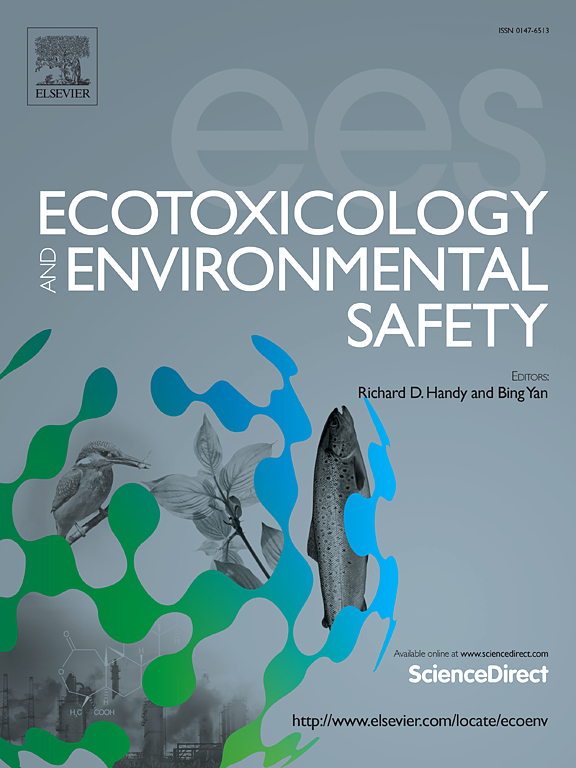Potential threat of environmental toxin palytoxin to cerebral nerves: A mechanism study in vitro and in vivo
IF 6.2
2区 环境科学与生态学
Q1 ENVIRONMENTAL SCIENCES
引用次数: 0
Abstract
Palytoxin (PTX), a toxin naturally synthesized by marine organisms like Palythoa, Ostreopsis and Trichodesmium spp. in tropical and temperate seas, bioaccumulates in fish and crustaceans, thereby exposing humans through the food chain. Although growing evidence highlights PTX's lethal hepatotoxicity, nephrotoxicity, and cardiotoxicity, its neurotoxic effects and the underlying mechanisms remain elusive. In this study, we assessed the cerebral neurotoxicity of PTX by using HT22 neuronal cells and a chronic mouse model, conducting a comprehensive analysis of phenotypic alterations and gene expression changes. Phenotypic analysis revealed significant damage to mitochondria, endoplasmic reticulum, and axons and disruptions in energy metabolism in PTX-treated neuronal cells and mouse brains. Transcriptome sequencing and real-time quantitative reverse transcription polymerase chain reaction indicated that key genes in the JNK/p38 MAPK signaling, mitochondrial stress, and endoplasmic reticulum stress pathways were significantly altered. Furthermore, pretreatment with JNK and p38 inhibitors significantly restored mitochondrial membrane potential, ATP content, and cell viability, while reducing the expression of pro-apoptotic genes in HT22 cells. These findings confirm that JNK/p38 MAPK signaling pathways activation, leading to mitochondrial stress, is a major contributor to PTX-induced neuronal cell death at the cellular level. Chronic exposure to PTX was shown to damage mammalian cerebral nerves, carrying a potential risk for neurodegenerative diseases. Our study provides insights into the environmental and health risks associated with PTX exposure and offers a foundation for risk assessment and intervention strategies.
求助全文
约1分钟内获得全文
求助全文
来源期刊
CiteScore
12.10
自引率
5.90%
发文量
1234
审稿时长
88 days
期刊介绍:
Ecotoxicology and Environmental Safety is a multi-disciplinary journal that focuses on understanding the exposure and effects of environmental contamination on organisms including human health. The scope of the journal covers three main themes. The topics within these themes, indicated below, include (but are not limited to) the following: Ecotoxicology、Environmental Chemistry、Environmental Safety etc.

 求助内容:
求助内容: 应助结果提醒方式:
应助结果提醒方式:


